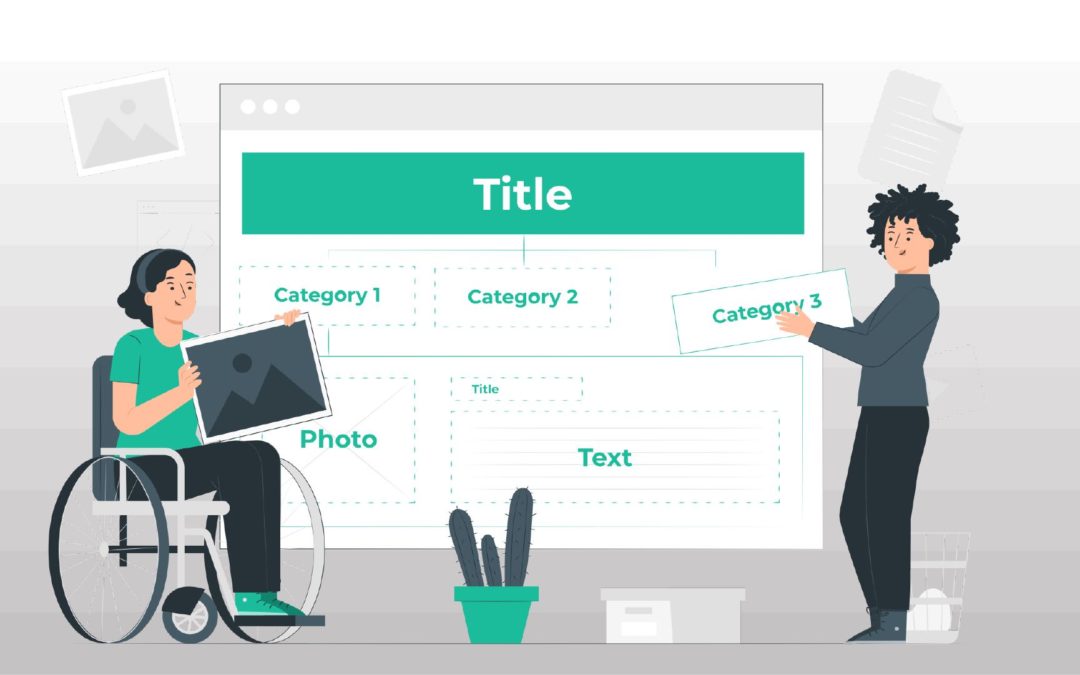
by Variotik Ö. | Dec 23, 2022 | Blog, SEO, Website
As a business owner or website replica watches UK manager, one of your main goals is likely to drive traffic to your website. After all, the more people who visit your site, the more potential customers you have. One effective way to do this is through search engine optimization (SEO).
SEO is the process of optimizing your website and its content to best replica watches improve its ranking in search engine results pages (SERPs). When someone searches for a keyword or phrase related to your business, you want your website to appear as high as possible in the SERPs so that people are more likely to click on it and visit your site.
There are many factors that go into SEO, including the quality cheap replica rolex watches and relevance of your website’s content, the structure and organization of your site, and the presence of keywords and phrases that people are searching for. By optimizing these elements, you can improve your website’s ranking and drive more traffic to your site.
One of the benefits of SEO is that it is an ongoing process. This means that you can continually work to improve your website’s ranking and drive more traffic to it over time. It’s important to keep in mind, however, that SEO takes time and effort, and it’s not a quick fix. It requires consistent work and a long-term commitment to see results.
In addition to driving traffic to your website, SEO can also help improve the user experience for your visitors. By creating well-organized, relevant content that is easy for search engines to understand, you can make it easier for people to find what they’re looking for on your site. This can lead to increased engagement and conversions, which can ultimately help your business grow.
To summarize, search engine optimization is an important tool for driving traffic to your website and improving the user experience for your visitors. By optimizing your website and its content, you can improve your ranking in search engine results and attract more potential customers to your site. It’s a long-term process, but the effort is worth it in the end.

by Variotik Ö. | Dec 23, 2022 | Blog, SEO, Tips
Sure! Here are some tips for creating high-quality content for your website:
- Start with a clear purpose: Before you start writing, it’s important to understand the purpose of your content and who it is intended for. This will help guide your content creation process and ensure that you are creating content that is relevant and valuable to your target audience.
- Conduct thorough research: To create high-quality content, you need to have a deep understanding of your topic. This means conducting thorough research and gathering as much information as possible.UK Replica offers a variety of 1:1 best Replica rolex GMT-Master II, high quality fake rolex GMT-Master-II. This will help you create content that is accurate, informative, and useful to your readers.
- Use a clear and concise writing style: When it comes to creating high-quality content, it’s important to use a clear and concise writing style. Avoid using jargon or overly complicated language, and instead use simple, easy-to-understand language to convey your message.
- Edit and proofread: After you’ve written your content, it’s important to take the time to edit and proofread it. This will help ensure that your content is free of errors and easy to read.
- Use formatting and visuals to break up the text: Nobody wants to read a long block of text, so use formatting and visuals like headings, bullet points, and images to break up the text and make it easier for readers to digest.
- Optimize for SEO: To ensure that your content is easily discoverable by search engines, be sure to optimize it for SEO. This includes using relevant keywords

by Variotik Ö. | Dec 20, 2022 | Tips, Website
In today’s digital landscape, having a mobile-friendly website is no longer a luxury; it’s a necessity. With more and more people accessing the internet on their smartphones and tablets, Best place to buy cheap rolex daytona replica. And the best AAA+ swiss made grade 1 Rolex replica on our website with fast shipping.it’s crucial that your website is optimized for mobile devices.
There are several reasons why mobile-friendly websites are so important:
- Increased user engagement: A mobile-friendly website provides a better user experience, which leads to increased engagement. When users can easily navigate and use your website on their mobile devices, they are more likely to stay on your site longer and engage with your content. This can lead to increased conversions and sales.
- Improved search engine rankings: Google and other search engines prioritize mobile-friendly websites in their search results. This means that if your website is not optimized for mobile devices, it may rank lower in search results and be less visible to potential customers.
- Greater reach: With more and more people using their mobile devices to access the internet, it’s important to make sure that your website is easily accessible on these devices. This will allow you to reach a wider audience and potentially increase your customer base.
- Better customer satisfaction: A mobile-friendly website makes it easier for customers to find and interact with your business. This can lead to increased customer satisfaction and loyalty.
- Competitive advantage: In today’s digital world, having a mobile-friendly website is essential to stay competitive. If your competitors have mobile-friendly websites and you don’t, you could be missing out on potential customers.
In conclusion, having a mobile-friendly website is crucial in today’s digital landscape. It allows you to reach a wider audience, improve your search engine rankings, and provide a better user experience for your customers. Don’t let your business fall behind – make sure your website is optimized for mobile devices.

by Variotik Ö. | Dec 20, 2022 | Design, Tips
A color palette is an important element of any design project, as it sets the tone and mood for the entire piece. Whether you’re designing a website,Welcome to High Quality Replica Rolex Watches Sales on www.rolexreplicaswissmade.com, Buy the Best Replica Rolex Watches in the UK. a logo, or a piece of marketing material, having a cohesive color palette is essential for creating a cohesive and visually appealing final product.
But how do you go about creating a color palette? Here’s a step-by-step guide to help you get started:
- Start with a single color. Choose a color that you feel represents the overall aesthetic and mood you want to convey. This could be a color that you particularly like, or one that is relevant to your brand or industry.
- Select complementary colors. Once you have your main color, it’s time to choose complementary colors that will work well with it. Complementary colors are colors that are opposite each other on the color wheel, such as blue and orange, or purple and yellow. These colors will create a strong visual contrast when used together.
- Consider shades and tones. In addition to selecting complementary colors, you should also consider creating variations of your main color by adding black (to create a shade) or white (to create a tone). This will give you a range of colors to choose from, and allow you to create depth and interest in your designs.
- Test out your color palette. Before committing to your final color palette, it’s a good idea to test out your selected colors in a design. You can use a tool like Adobe Color to create a palette and see how the colors look together. You may find that certain colors don’t work as well as you thought, or that you need to add additional colors to create balance.
- Document your color palette. Once you’ve settled on your final color palette, it’s important to document it so that you can reference it in the future. You can do this by creating a document with swatches of your colors, or by using a tool like Adobe Color to create a palette that you can easily access.
Creating a color palette may seem like a small detail, but it’s an important part of any design project. By following these steps, you can create a cohesive and visually appealing color palette that will enhance the overall look and feel of your designs.

by Variotik Ö. | Dec 20, 2022 | Website
A website builder is a tool that allows you to create a professional-looking website quickly and easily, without needing any technical expertise or coding skills. Website builders typically offer a range of customizable templates, drag-and-drop design tools, and other features to help you create and manage your website.
Here are some benefits of using a website builder for your business:
- It saves time and effort. Creating a website from scratch can be a time-consuming and complex process, especially if you don’t have any coding experience. A website builder makes it easy to create a professional-looking website in just a few simple steps, saving you time and effort.
- It’s cost-effective. Hiring a web developer to create a website for your business can be expensive, especially for small businesses. A website builder offers a cost-effective solution that allows you to create a professional-looking website without breaking the bank.
- It’s user-friendly. Website builders are designed to be user-friendly, even for those who have never created a website before. Most website builders offer intuitive drag-and-drop design tools, customizable templates, and other features that make it easy to create and manage your website.
- It offers flexibility and customization. With a website builder, you have complete control over the design and functionality of your website. You can choose from a range of customizable templates and add or remove features as needed to create a website that perfectly reflects your business.
- It offers support and resources. Most website builders offer customer support and a range of resources, such as tutorials and guides, to help you create and manage your website. This can be especially helpful for those who are new to website building.
In short, using a website builder offers a range of benefits for your business. It’s a cost-effective and user-friendly solution that allows you to create a professional-looking website quickly and easily, without needing any technical expertise. So if you’re looking to create a website for your business, consider using a website builder.




